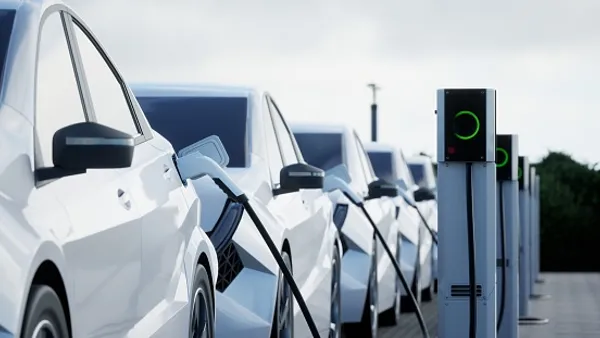Update: May 14, 2021: Gov. Jay Inslee, D, on May 13, vetoed the Clean Cars amendment package to E2SHB 1287 while signing the bulk of the legislation, which requires electric utilities to prepare for a zero emissions transportation future.
In his veto statement, Inslee said the amendment package "ties a very important goal of electrifying our transportation sector to the implementation of a road usage charge program...[W]e cannot afford to link an important goal like getting to 100% zero-emission vehicles to a separate policy that will take time to design and implement."
Inslee said he looks "forward to working with legislators and stakeholders to figure out how to design a road usage charge that ensures the privacy of drivers, helps meet our zero-emission transportation goals, and ensures low-income and overburdened communities are not doubly penalized after already suffering through longer commutes."
"HB 1287 passed 25-23 in the Senate and 54-43 in the House in April, suggesting a veto override is unlikely," Repair Driven News reported.
Dive Brief:
- Washington lawmakers last week passed legislation that would create a goal for all passenger and light-duty vehicles sold in the state of model year 2030 and after to be electric vehicles (EV), five years ahead of California's similar target.
- The 2030 target was approved by the state legislature as an amendment to a bill that addressed preparation for a zero-emissions transportation future, and now awaits the signature of Democratic Gov. Jay Inslee.
- The legislation would also create a mapping tool to help utilities predict EV adoption and load impacts in their service territory, said Matthew Metz, co-executive director of Coltura, a non-profit that led a coalition of organizations supporting the bill. "We have a big mix of public and private utilities, and small and big ones — so this is helpful to do it once, rather than each utility having to figure out for themselves how to model the data," he added.
Dive Insight:
Washington's transportation sector is responsible for nearly half the state's greenhouse emissions, most of which come from on-road vehicle emissions. The 100% EV target, however, will only come into effect after the state has adopted a road usage charge, or similar fee based on vehicle miles traveled, and at least 75% of registered passenger and light-duty vehicles in the state are subject to it.
From the utility perspective, the goal would necessitate a lot more investments, especially around the local distribution grid, according to Metz. People who live in apartments, in particular, will be dependent on fast charging, "and fast charging puts a strain on the grid. It's eminently doable, but it's going to require quite a few upgrades," he said.
The legislation would create a new publicly available mapping and forecasting tool, which would outline the buildout of charging infrastructure necessary to support predicted levels of EV adoption in the state, with one broader aim of helping utilities plan for the subsequent impacts on the distribution system. Utilities would also incorporate into their planning processes modeled load forecast scenarios reflecting anticipated EV adoption in their service areas.
Once the mapping tool is up and running, utilities can start making plans, forecasts and investment decisions reflecting the new goal, Metz said. More broadly, state agencies are increasingly going to need to incorporate the 2030 EV goal in their planning processes, for instance, in terms of ensuring adequate charging locations.
Last year, California Gov. Gavin Newsom, D, signed an executive order setting the state on a path to all new passenger vehicles sales being zero-emission by 2035. Staying on track to reach that goal would lead to a 9% increase in electricity demand by the end of this decade, according to Amanda Myers, senior policy analyst with Energy Innovation.
"Widespread transportation electrification will increase electricity demand. Utilities need to plan for that, and… many are," Myers said.
A recent report analyzing a scenario where EVs comprise all new light-duty vehicle sales in the U.S. by 2030, with medium and heavy-duty vehicles following in 2035, found that meeting the associated rise in electricity demand is very possible, Myers said. In that scenario, electrification measures lead to a 2% electricity demand growth per year on average, requiring the U.S. to install an average of 105 GW of new wind and solar capacity, as well as 30 GW of new battery storage, on an annual basis. This is almost four times the current deployment rate in the U.S., according to the report, but lower than China's deployment in 2020.
"So again, 105 GW per year going forward is a lot, but it's not unprecedented. That's exactly why getting these utilities focused on some of these electrification goals now, for targets that are nearly a decade away, makes a lot of sense," Myers said.















